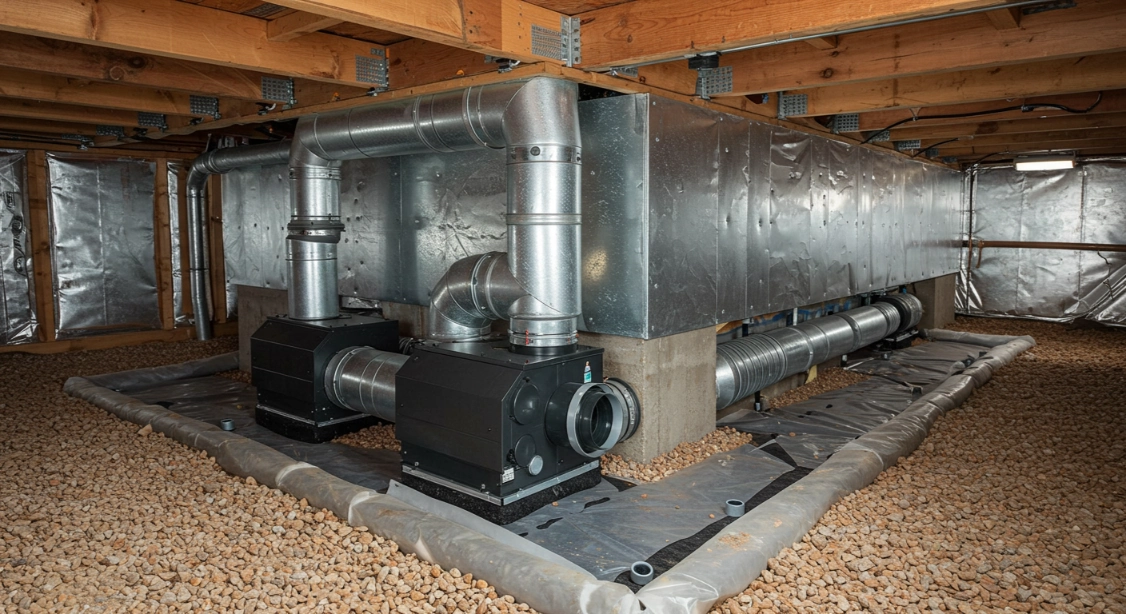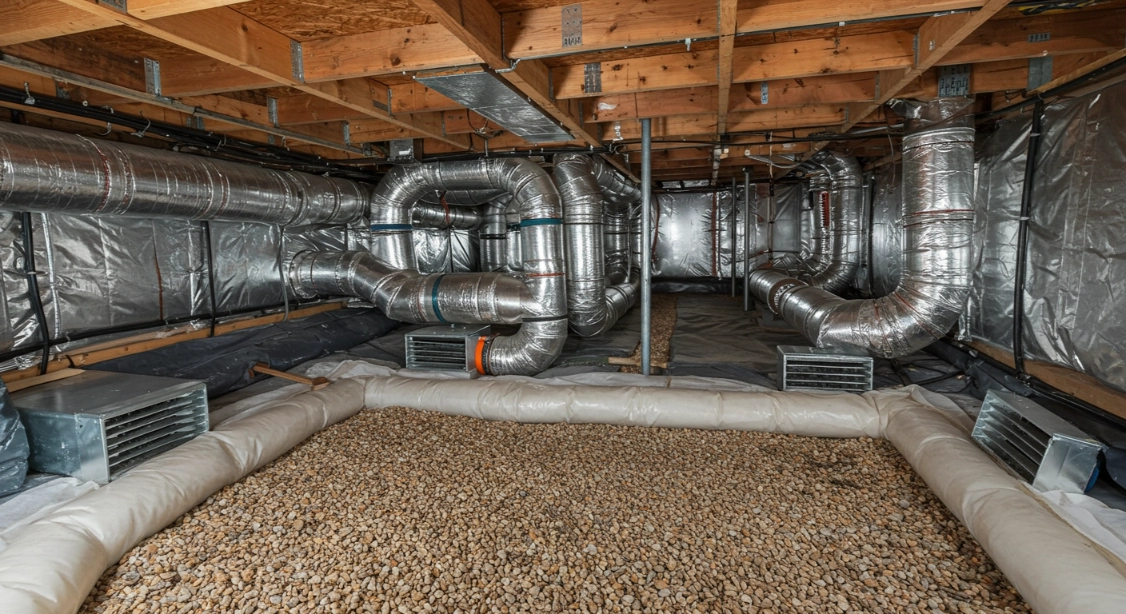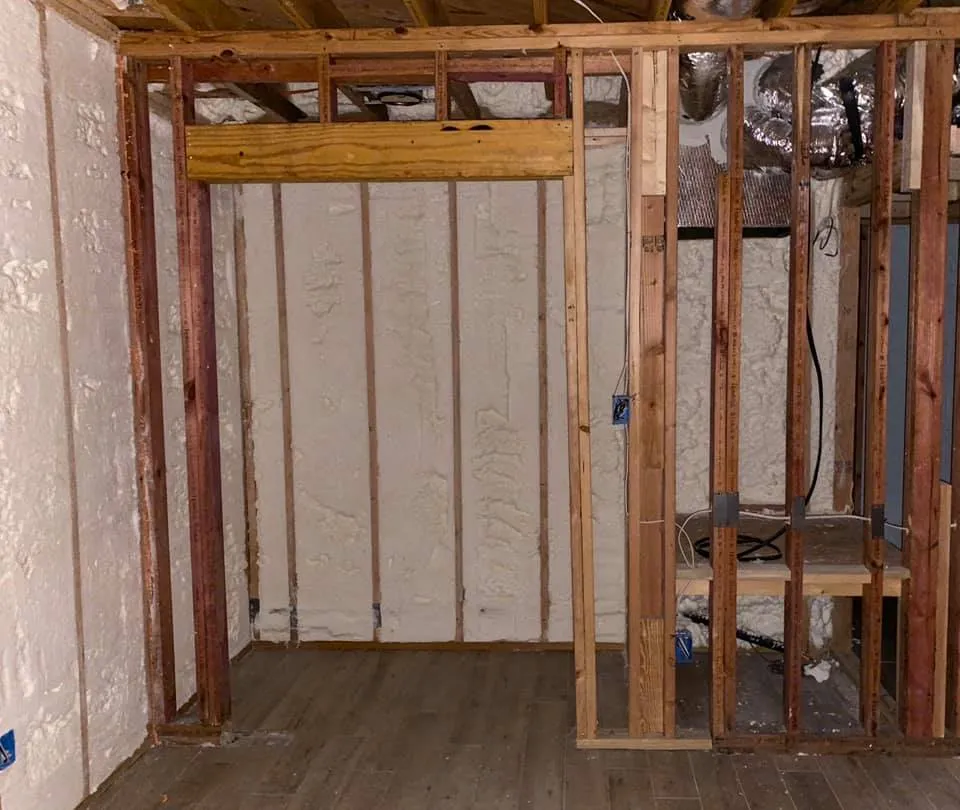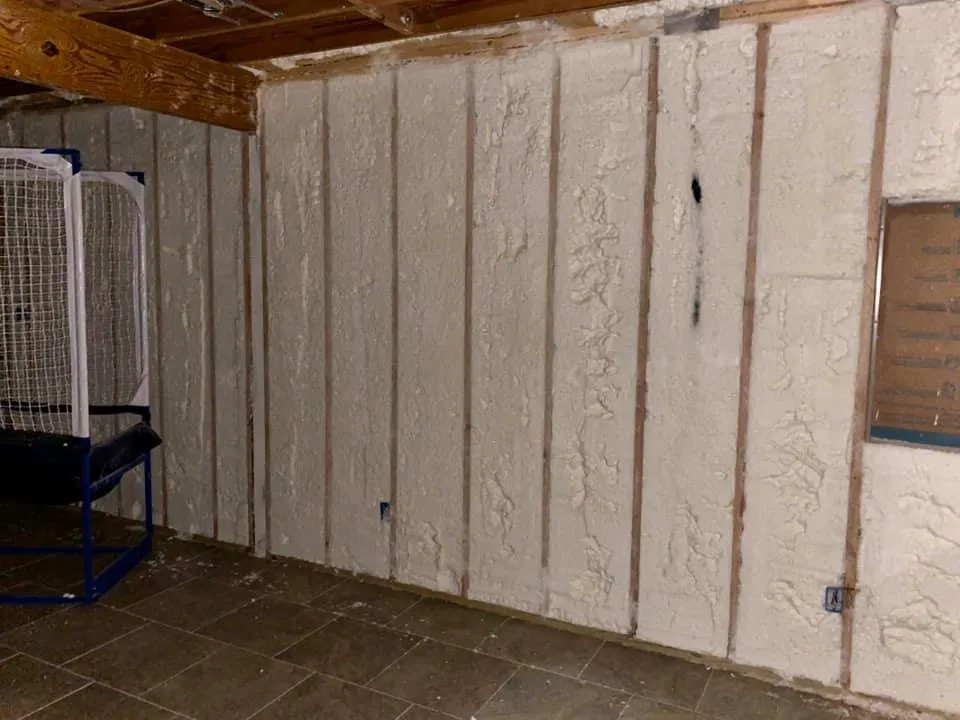Yes, ventilating your crawl space can improve air quality, but only under the right conditions. Poorly executed ventilation often causes more harm than good. In humid regions like Central Texas, open vents frequently allow moisture-laden air to enter the crawl space, leading to mold growth, wood rot, and insulation failure—all of which degrade indoor air quality. In contrast, controlled ventilation or encapsulation with dehumidification supports healthier indoor air.
Effective air quality management begins with isolating the crawl space from external moisture and contaminants. Stellrr Insulation & Spray Foam has managed hundreds of crawl space projects across Central Texas. Practical knowledge of building envelope behavior, moisture migration, and HVAC interaction confirms that unconditioned ventilation rarely solves air quality issues.
How Crawl Space Conditions Impact Indoor Air Quality
Up to 50% of the air inside a home can originate from the crawl space, especially in older buildings with poor sealing. Ventilation decisions must account for climate, humidity levels, and construction type.
Ventilation Options Compared
| Method | Description | Air Quality Impact | Suitability (Central TX) |
|---|---|---|---|
| Open Ventilation | Traditional vents to outside air | Often negative (moisture, mold) | Poor |
| Mechanical Ventilation | Fans circulate air between crawl space and exterior | Neutral to Positive | Moderate to High |
| Encapsulation + Dehumidifier | Sealed with vapor barrier and humidity control | Positive (stable RH, no mold) | High |
| Hybrid (Conditioned Air Supply) | Supplies small amounts of conditioned air from HVAC | Positive | High |
Technical Specifications: Crawl Space Ventilation
| Parameter | Recommended Range | Reason |
|---|---|---|
| Relative Humidity (RH) | 45% – 55% | Prevents mold and wood rot |
| Ventilation Rate | 1 CFM per 50 sq ft (if vented) | Meets ASHRAE standards |
| Vapor Barrier Thickness | Minimum 10 mil | Durability and puncture resistance |
| Insulation Type (Floor) | Closed Cell Spray Foam | Air seal and moisture resistance |

Common Factors That Lead to Poor Crawl Space Air
- Ground moisture infiltration through unsealed floors
- Uninsulated HVAC ductwork causing condensation
- Air leakage from unsealed rim joists
- Organic debris accumulating and decaying
- Rodent infestations introducing allergens and bacteria
Bonus Tip
Use a thermal imaging camera after sealing work to confirm there are no cold air leaks from rim joists or floor cavities.
Regional Guidance: Central Texas Climate Considerations
In Austin and surrounding areas, crawl space humidity levels often exceed safe thresholds during spring and summer. High outdoor humidity makes traditional venting unreliable. Sealed systems with mechanical dehumidifiers offer year-round moisture control and are proven to stabilize indoor air conditions. Data from the EPA indicates indoor air quality improvements of up to 30% after full encapsulation in humid climates (Source: EPA Indoor Air Quality Studies, 2024).
Things to Consider Before Making a Decision
- Climate zone: Open vent systems may work in dry, arid regions but fail in humid climates.
- Age of home: Older homes often lack proper subfloor insulation and air sealing.
- Budget: Encapsulation requires higher upfront investment but offers long-term savings.
- Pest activity: A sealed crawl space deters rodents and insects more effectively.
- Existing HVAC system: Some systems support conditioned air supply into the crawl space.
Bonus Tip
Before choosing a ventilation strategy, measure current humidity levels and assess mold presence using a home test kit or professional air sampling.
Common Questions
Can crawl space vents be closed permanently?
Yes, if a sealed encapsulation system is installed with proper drainage and dehumidification.
Is a dehumidifier necessary in a sealed crawl space?
In humid regions like Central Texas, yes. Dehumidifiers regulate moisture that still enters through walls or ground vapor.
How do I know if my crawl space air is affecting indoor quality?
Musty smells, increased dust, and allergy symptoms are common indicators. Air quality testing can confirm.
How often should a crawl space be inspected?
At least once a year, and after severe storms or flooding.
Stellrr Insulation & Spray Foam Offers These Services
- Crawl Space Insulation Closed cell spray foam prevents air and moisture transfer, creating an effective thermal barrier.
- Insulation Removal Removes moldy or damaged insulation to stop contaminants from entering indoor air.
- Closed Cell Insulation Ideal for moisture-prone crawl spaces, offering both insulation and vapor control.
- Wall Insulation Improves the building envelope by sealing rim joists and perimeter walls in the crawl space.
Get Expert Insulation Guidance
For reliable recommendations based on Central Texas climate conditions and proven field results, contact Stellrr Insulation & Spray Foam.
Phone: (512) 710-2839 Email: info@stellrr.com
FAQ Section
What’s the best insulation for crawl spaces in humid areas?
Closed cell spray foam, because it resists both air and moisture penetration.
Is encapsulation a permanent solution?
With proper installation and regular monitoring, encapsulation can last decades.
How long does crawl space encapsulation take?
Typically 1-3 days, depending on size and complexity.
Can mold return after sealing the crawl space?
Not if humidity is consistently controlled and leaks are repaired promptly.
How much does crawl space encapsulation improve energy efficiency?
EPA studies show 15-25% HVAC energy savings in sealed crawl spaces compared to vented ones.





